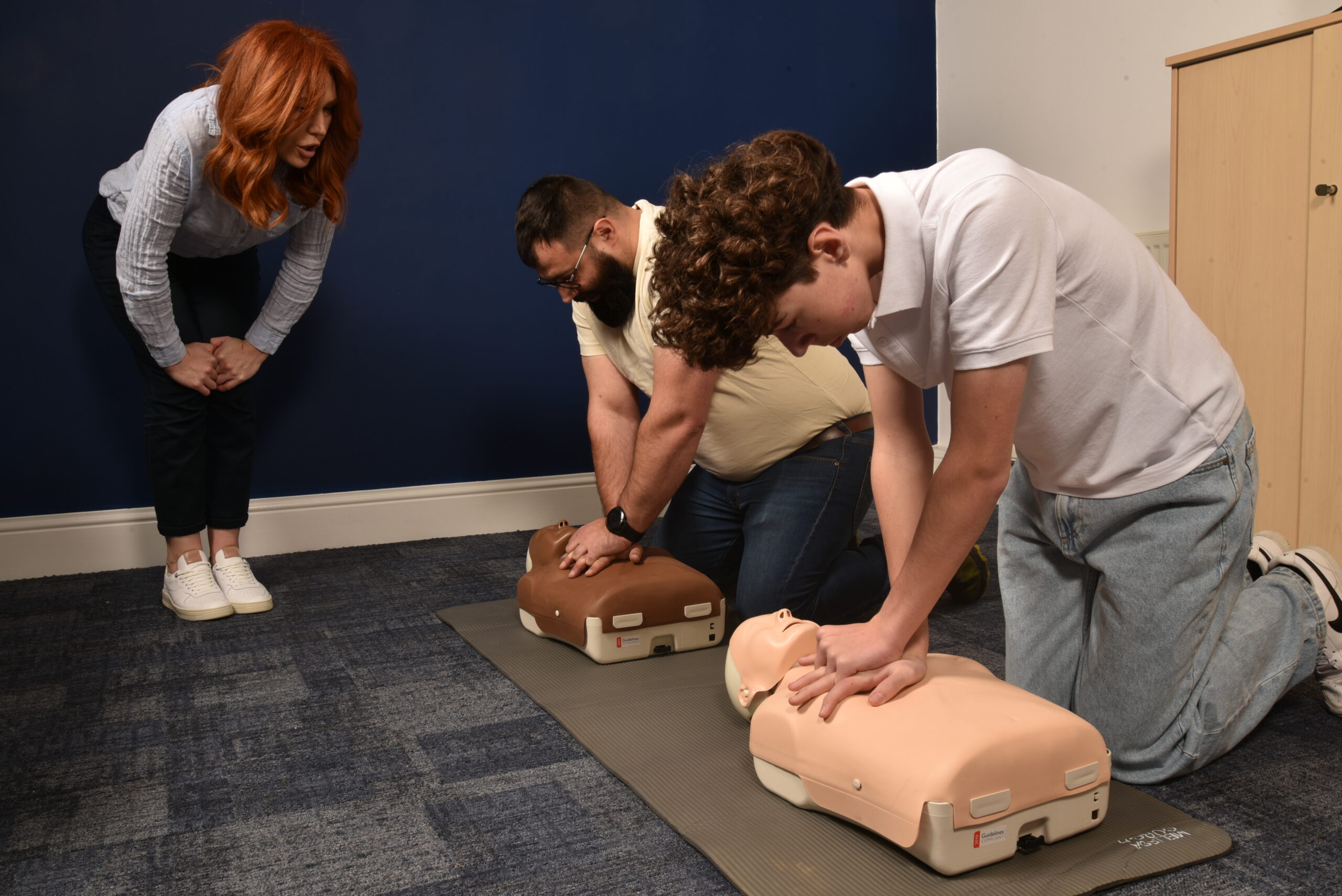She was 14. She saved her dad’s Life.
In a quiet home in Kent, 14-year-old Lucy was doing homework when her father suddenly collapsed. She called 999, remembered how to perform CPR from her school training, and started compressions immediately. Her actions saved his life.
Her dad survived.
Doctors later said if Lucy hadn’t started CPR when she did, he wouldn’t have made it.
Stories like Lucy’s are a reminder that you don’t have to be a doctor to save a life. You just have to know what to do—and be willing to act.
Why Everyone Should Learn How to Perform CPR
Once you learn how to perform CPR, you’re empowered to help when seconds matter. Emergencies can happen anywhere—at work, in a supermarket, or even at home with your loved ones. Knowing how to perform CPR can be the difference between life and death. When someone’s heart stops beating or they stop breathing, CPR keeps oxygenated blood flowing to the brain and vital organs until medical help arrives.
You don’t need expensive equipment or medical experience—just calm, confidence, and basic knowledge.
Each year, over 30,000 cardiac arrests happen outside of hospitals in the UK. Sadly, less than 1 in 10 people survive. But early CPR can double—or even triple—a person’s chance of survival.
How to Perform CPR: Check for a Response
Your safety comes first. Make sure the area is safe—no traffic, fire, or electrical hazards. Then:
-
- Gently shake the person’s shoulders.
-
- Ask loudly: “Are you okay?”
If they don’t respond, they may be unconscious and need urgent help. Shout for assistance and prepare to begin CPR.
How to Perform CPR: Open the Airway and Check for Breathing
Place the person on their back and gently tilt their head back by lifting the chin. This opens the airway.
-
- Look for chest movement.
-
- Listen for normal breathing.
-
- Feel for breath on your cheek.
If the person isn’t breathing or is only gasping, they are likely in cardiac arrest. Start CPR immediately.
💡 Fact: Agonal breathing (gasping) is not normal and often occurs right after cardiac arrest. It’s a signal to start compressions, not to wait.
How to Perform CPR: Call Emergency Services
Call 999 immediately or ask someone else to do it.
-
- Put the call on speaker so you can begin CPR while following the operator’s instructions.
-
- If an AED (automated external defibrillator) is nearby, have someone get it fast.
AEDs are often found in shopping centres, gyms, schools, or community buildings—and they talk you through what to do step-by-step.
How to Perform CPR: Begin Chest Compressions
Here’s how:
-
- Kneel beside the person’s chest.
-
- Place one hand in the centre of the chest and the other hand on top, interlocking fingers.
-
- With straight arms, push down 5–6 cm deep at a rate of 100–120 compressions per minute (to the beat of “Stayin’ Alive” by the Bee Gees).
-
- Allow the chest to rise completely between compressions
⚠️ Myth buster: You can’t make things worse by trying. A few broken ribs are survivable. Inaction isn’t.
How to Perform CPR: Give Rescue Breaths (if trained)
If you’re trained and confident:
-
- After every 30 compressions, tilt the head, pinch the nose, and give 2 rescue breaths.
-
- Each breath should last about 1 second, just enough to make the chest rise.
If you’re not trained or unsure, do hands-only CPR and continue with chest compressions. It’s still highly effective in the first few minutes of an adult’s cardiac arrest.
How to Perform CPR: Continue Until Help Arrives
Keep going until:
-
- The person starts to breathe normally or move.
-
- A defibrillator is used and advises you to stop.
-
- Paramedics take over.
-
- You physically can’t continue
If an AED arrives, follow the spoken instructions exactly—apply pads, don’t touch the person when it checks their heart, and deliver shocks if told to. Even if you’re not sure you’re doing it perfectly, attempting CPR is always better than not knowing how to perform CPR at all.
Common Questions About CPR
What if I do something wrong?
The worst thing you can do is nothing. You’re legally protected when trying to help someone in an emergency.
Can I do CPR on a child or infant?
Yes, but the technique changes slightly. You use gentler compressions and may need to use one hand or just fingers. It’s best to take a certified course to learn age-specific CPR techniques.
Be the Difference—Learn CPR Today
Lucy’s story isn’t just heartwarming—it’s a wake-up call. CPR is simple to learn and only takes a few hours, but the confidence it gives you could last a lifetime.
👉 Join Our CPR and First Aid Training Course
👉 More CPR Guidance from the NHS
Our Qualsafe-accredited courses teach you exactly how to perform CPR and give you the confidence to act in a crisis. They are practical, engaging, and delivered by experienced instructors who make learning easy and stress-free. Book a place and become the person others can count on.





